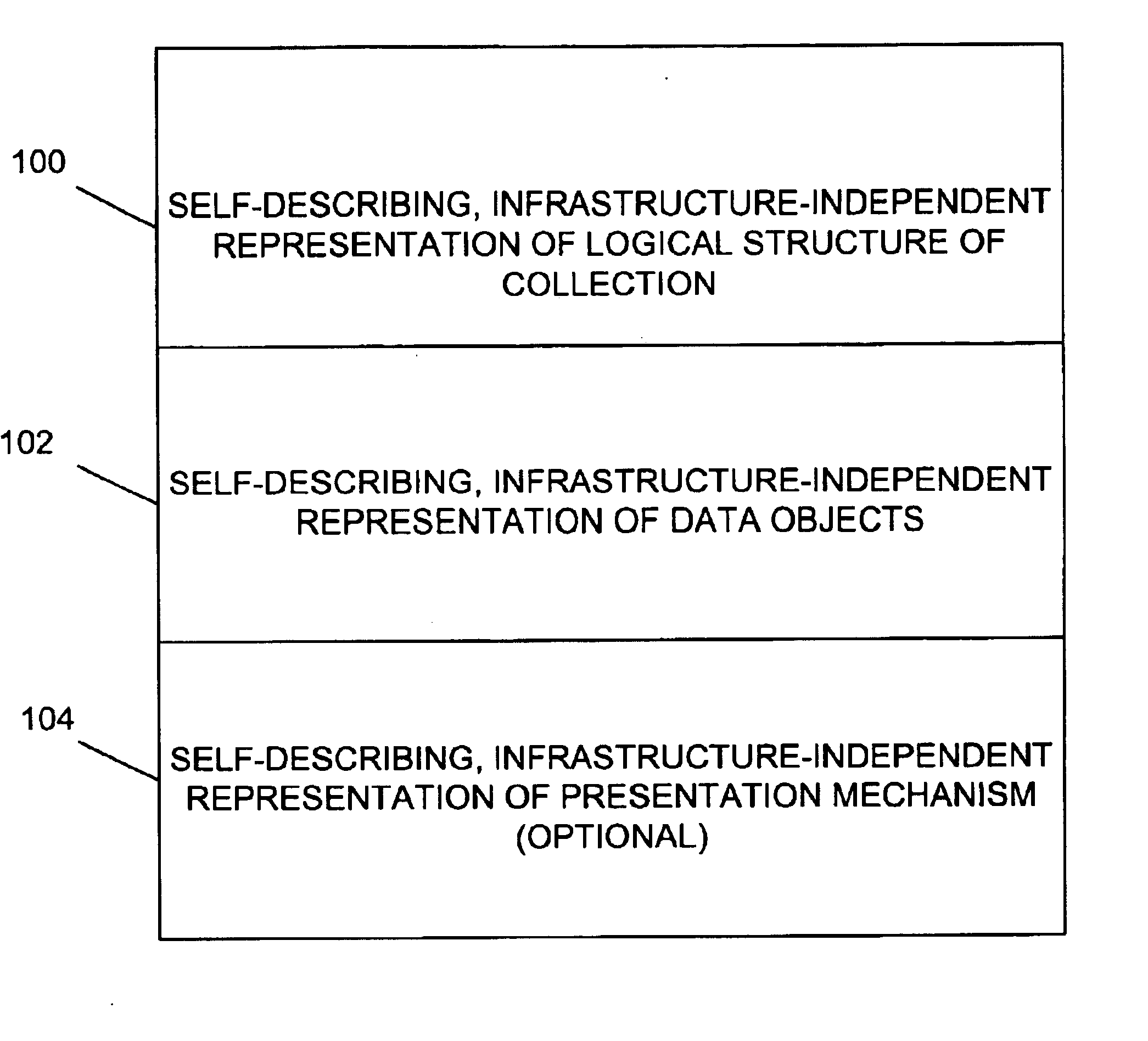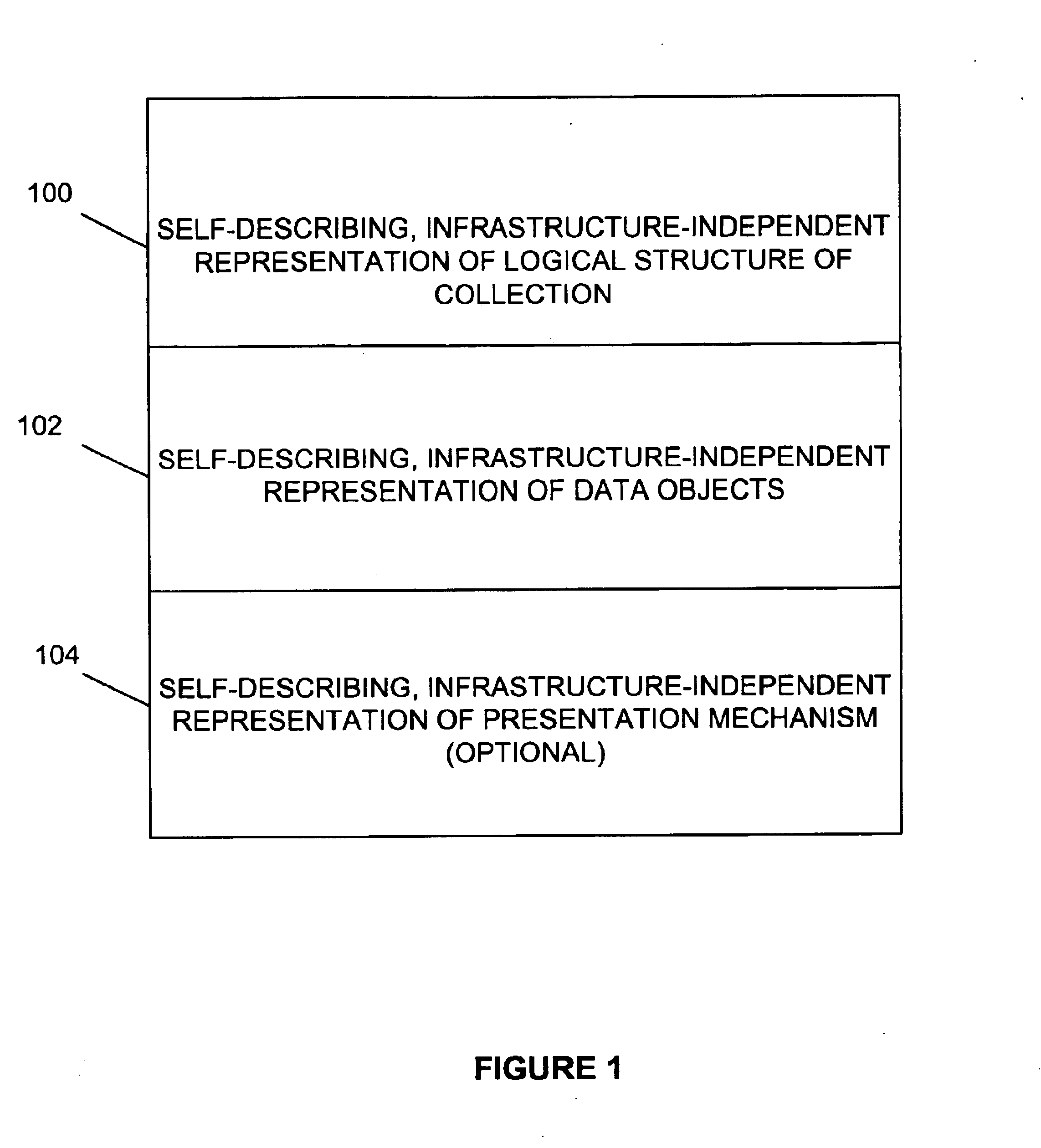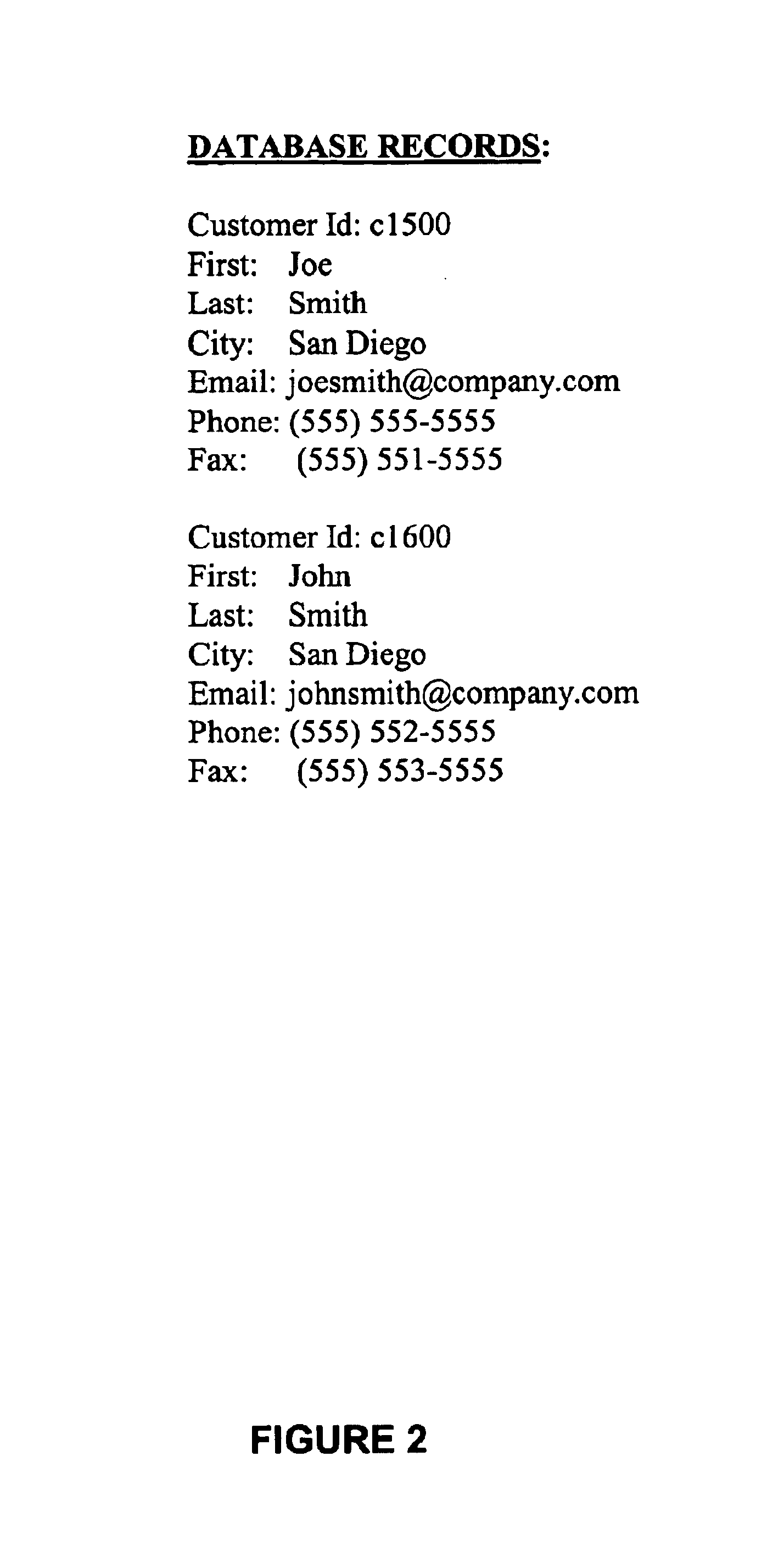Persistent archives
a technology of persistent archives and archives, applied in the field of data archives, can solve the problems of intractable problems, major challenges in long-term storage and access of digital information, and obsolescence of archival storage media
- Summary
- Abstract
- Description
- Claims
- Application Information
AI Technical Summary
Benefits of technology
Problems solved by technology
Method used
Image
Examples
first embodiment
I. First Embodiment
[0113]A. Persistent Archives
[0114]A first embodiment of the invention comprises a persistent archive as illustrated in FIG. 1. The archive, which may be tangibly embodied on a processor readable medium, comprises a self-describing, infrastructure-independent representation of a logical structure for the collection, identified with numeral 100, and a self-describing, infrastructure-independent representation of the data objects, identified with numeral 102. As illustrated, the archive may also include a self-describing, infrastructure-independent representation of a presentation mechanism for one or more of the data objects. This representation is identified in the figure with numeral 104.
[0115]For purposes of this disclosure, the phrase “self-describing” is a flexible concept which varies according to the circumstances, but it is generally used to refer to an element whose meaning is apparent from the element itself or through resort to no more than generally unde...
second embodiment
II. Second Embodiment
[0161]A. Knowledge-Based Persistent Archives
[0162]In a second embodiment, the invention provides a knowledge-based persistent archive of a collection of data objects tangibly embodied on a processor readable medium. Referring to FIG. 24, one embodiment of the knowledge-based persistent archive comprises a self-describing, infrastructure-independent representation of a logical structure for the collection, identified with numeral 2400, a self-describing, infrastructure-independent representation of the data objects, identified with numeral 2402, and a self-describing, infrastructure-independent representation of knowledge relevant to the collection, identified with numeral 2404. The archive may optionally include a self-describing, infrastructure-independent representation of a presentation mechanism for one or more data objects in the collection.
[0163]The first two elements of the archive—the self-describing, infrastructure-independent representation of a logica...
third embodiment
III. Third Embodiment
[0223]A. Knowledge-Based Persistent Archives With At Least One Self-Describing, Infrastructure-Independent Or Executable Specification
[0224]In a third embodiment of the invention, a knowledge-based persistent archive which includes at least one self-describing, infrastructure-independent or executable specification is provided. Referring to FIG. 46, in this embodiment, the archive comprises at least one representation of the collection of data objects, identified with numeral 4600; at least one self-describing, infrastructure-independent or executable specification of one or more transformations relating to the collection, identified with numeral 4602; and at least one self-describing, infrastructure-independent or executable specification of one or more rules encoding knowledge relevant to the collection, identified with numeral 4604. Optionally, the archive includes a self-describing, infrastructure-independent representation of a presentation mechanism for on...
PUM
 Login to View More
Login to View More Abstract
Description
Claims
Application Information
 Login to View More
Login to View More - R&D
- Intellectual Property
- Life Sciences
- Materials
- Tech Scout
- Unparalleled Data Quality
- Higher Quality Content
- 60% Fewer Hallucinations
Browse by: Latest US Patents, China's latest patents, Technical Efficacy Thesaurus, Application Domain, Technology Topic, Popular Technical Reports.
© 2025 PatSnap. All rights reserved.Legal|Privacy policy|Modern Slavery Act Transparency Statement|Sitemap|About US| Contact US: help@patsnap.com



